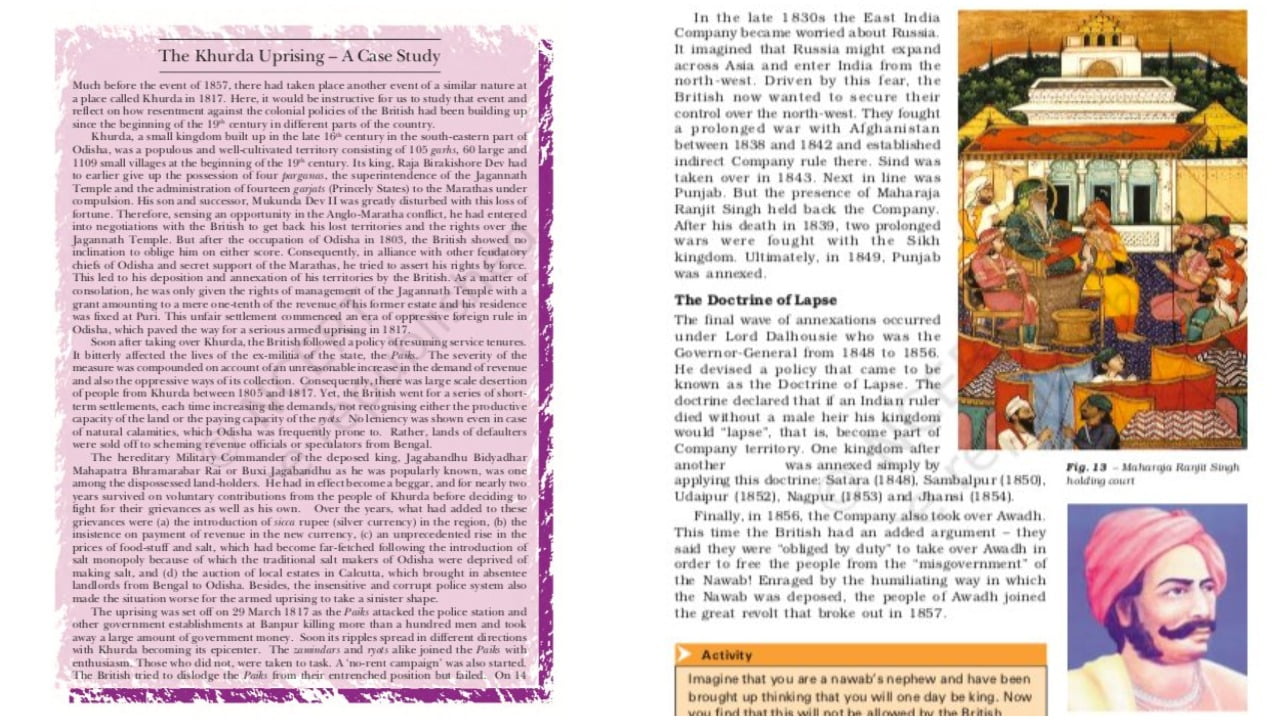Paika Rebellion, Veer Surendra Sai Find Space In NCERT History Textbooks

New Delhi: The re-writing of the NCERT history textbooks has laid emphasis on regional freedom fighters and freedom movements that hitherto had remained absent from the country’s collective memory.
One such freedom movement that has been introduced in the form of a case study in Class VIII is the Paika Rebellion of 1817. It is hailed as India’s first struggle for independence that had shaken the might of the British empire. The Paikas had given a clarion call for freedom under the leadership of Bakshi Jagabandhu. Their heroic deeds still continue to inspire countless Odias, giving them a sense of pride about their rich legacy.
“In sum, it was the first such popular anti-British uprising in Odisha, which had far reaching effect on the future of the British administration in other parts of the country. To merely call it a Paika Rebellion will thus be an understatement,” two pages devoted to the ‘The Khurda Uprising’ said.

Veer Surendra Sai also finds mention in a separate section along with several other freedom fighters who gave up their lives unnoticed fighting the British’s East India Company. While the successive generation has conveniently forgotten these fearless gems of modern Indian history, the revised history syllabus has made a commendable job of bringing their stories to the classrooms across the country where NCERT textbooks are followed. Surendra Sai was believed to have died in Asirgarh Jail on May 23, 1884, but stories of his enduring struggle remained confined to a section of historians only.

The revision of the history text books gathered steam after the BJP-led government came to power in 2014. While the move was criticised by some as an attempt to saffronise education, right-wing historians had welcomed the development, as the history of this nation would have remained incomplete without knowing the fascinating tales of the countless leaders, whose folklore could never transcend beyond the alleys of hinterland India.
Spiritual leaders Sri Aurobindo and Swami Vivekananda, freedom fighters Lala Lajpat Rai and Vallabhbhai Patel, Peshwa and Maratha general Bajirao Ballal, Jat king Suraj Mal, Rajput icon Maharana Pratap and Chhatrapati Shivaji, founder of the Maratha empire, have either been introduced or have more space dedicated to them in the new History textbooks.
Maharana Pratap has also been introduced in the last chapter of the Class VII History book, in the section titled ‘The Watan Jagirs of the Rajputs’. This section is on the influential Rajput kings, especially those from Amber and Jodhpur, who served under the Mughals and in exchange “were permitted to enjoy considerable autonomy in their watan jagirs”. Here, Maharana Pratap of Mewar has been introduced as an exception, who did not give in to Mughal authority.
According to NCERT, more regional leaders could be subsequently added to the textbook. While announcing the incorporation of the Paika Rebellion, Union HRD Minister Satya Pal Singh had told the Lok Sabha in the Winter Session of December 2017 that the ‘Paikas’, ordinary peasants, landholders and salt-makers had all risen in unison against the British during this period making it a popular movement.
“Later, in 1857, we see a movement or uprising of similar nature though on a much larger scale. Therefore, from a historical point of view it can be said that the ‘Paika Bidroha’ had set an example for the classes as well as the masses in India to follow later on as and when circumstances so warranted,” he had said.

Comments are closed.